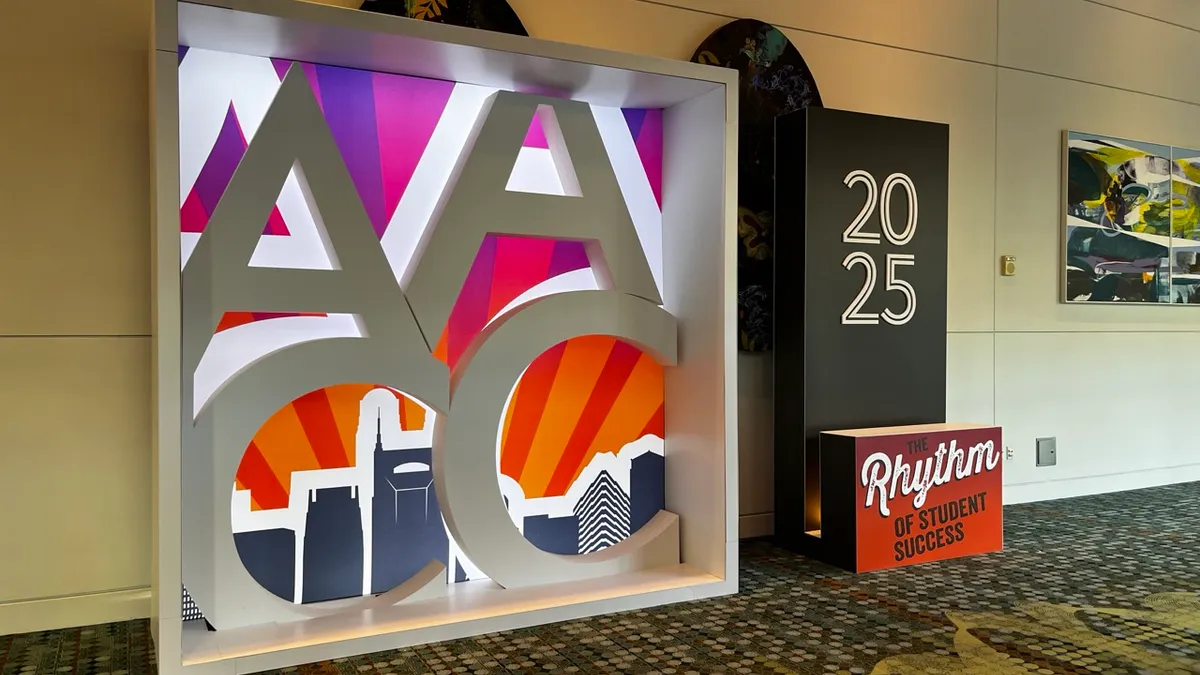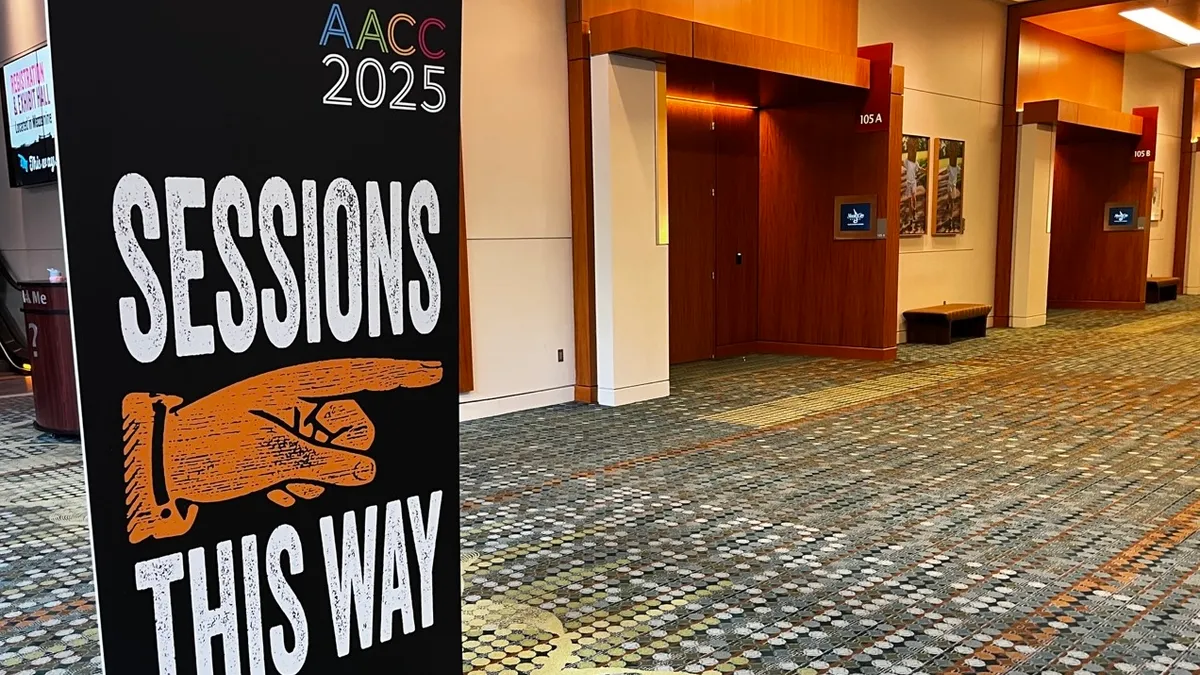The University of Chicago made headlines last June when it announced it was going test-optional to encourage more first-generation and low-income students to apply. It became the most competitive university to allow U.S. applicants to forgo submitting SAT or ACT scores.
But the news wasn't just U of Chicago's announcement. It was what happened next.
A year later, the school declared the shift a success, along with a range of other changes designed to increase access. It admitted its most diverse freshman class yet, with more low-income, first-generation, veteran and rural students coming to its 217-acre campus.
While U of Chicago didn't start the trend, it has contributed to its growth, with more than 30 schools following suit in the past year to push the number of test-optional four-year institutions across the country to more than 1,000.
That accounts for the fastest growth in the history of the test-optional movement, said Bob Schaeffer, public education director for the National Center for Fair and Open Testing (FairTest). As many as four dozen more schools are considering the change, he added. The trend is geographic in nature, with the majority of institutions in New England, and more than half of schools in Maryland, Pennsylvania and Virginia, currently test-optional, according to FairTest.
But questions remain about how this change impacts admissions: Does it demand more time to consider each applicant? Does it automatically diversify the applicant pool? And, perhaps most critical to its success, does it require hiring more staff?
Answers from college administrators and experts alike are: "definitely maybe." That is, just as there are a wide range of institutions, so too are there many ways to go test-optional.
Multiple approaches
Consider Hampshire College, a private liberal arts school in Amherst, Mass., where students create their own majors. Hampshire has been test-optional since it opened in 1970, and since the fall of 2014 it hasn't considered test scores even if applicants submit them. By going test-blind, officials hoped to better identify students who were a good fit for the college.
"There's no way to pass a class [here] just by cramming for an exam," said Kristina Moss Gunnarsdóttir, Hampshire's interim dean of admissions and financial aid. "We just wanted to admit more students who are likely to thrive academically."
The shift to test-blind applications resulted in more time spent with each application, leading the school of 1,200 students to add one to two more staff members, she said.
Bowdoin College, in Brunswick, Maine, was the first test-optional school in the U.S. Although the private liberal arts college's policy has been in place for 50 years, the admissions process has changed dramatically since, as its applicant pool grew from 3,500 in the 1980s to 9,300 today, said E. Whitney Soule, dean of admissions and financial aid. The college enrolls 1,800 undergraduates and this year accepted about 9% of applicants to add roughly 500 new students, she said.
While Bowdoin made the change explicitly to increase access, Soule said its holistic review of each application hasn't increased time demands on the admissions office.
"It really doesn't take longer to consider a student without a test score," she said. Even for students who submit test scores, she added, "testing doesn't hold enough weight to undo the more thorough evaluation we just completed."
Questioning the tests
The SAT and ACT tests were created to help colleges predict how a prospective student would fare in their first year at school no matter their location or high school's rigor. But concerns about the tests' fairness are driving the test-optional trend.
Critics say the SAT and ACT are culturally biased, with questions that discriminate against minority students, and that students who can hire a private tutor and take the test multiple times have an advantage over those who can't. A recent redesign of the SAT, meanwhile, caught flak for how some of its questions were designed.
This year, the College Board, which administers the SAT, announced it will add an "adversity score" for each test taker. The composite figure measures students' socioeconomic status across metrics such as their family's income, their neighborhood's crime rates and housing values, and their high school's rigor. In 2014, the College Board began giving income-eligible students fee waivers to apply to college and offering free online test prep.
"Even the testing agencies acknowledge aspects of testing that don't work well for every part of the population," Soule said. "We're not anti-test, we're just not relying on the test to do the work we're doing."
FairTest's Schaeffer doesn't call standardized test scores "totally irrelevant." But, he added, the difference between an SAT score of 1400 and 1200 "isn't as significant as what a high school record captures."
Colleges considering going test-optional should think beyond admissions, said Annie Reznik, executive director of the Coalition for College, a group that aims to expand access to higher education by offering an alternative to the Common Application and more preparatory resources.
"Be clear about why you are going test-optional and build in support for those other goals," she said, noting that after dropping its standardized test requirement, U of Chicago increased support for students once they arrived on campus.
The university, which is a member of the Coalition, promised free tuition for students with family incomes under $125,000 and financial aid to cover all costs for those earning less than $60,000 a year. It also added a $20,000 scholarship for first-generation students.
U of Chicago's initiative included several changes to its application process as well. The school now allows students to submit a two-minute video in place of the optional alumni or on-campus interview and it accepts nontraditional materials as supplements to students' applications.
Those changes appear to be paying off. Although the university didn't release specific figures, it reported that the number of first-generation and low-income students jumped by 20% year-over-year for its current incoming class, while rural student enrollment grew 56%.
Across all colleges, exactly how many students withhold test scores is uncertain. FairTest's Schaeffer said the figure could range from 15% of students at a school that recently made the change to 50% at a school where such a policy has been in place for years.
One in three applicants to Bowdoin don't include test scores, Soule said, a percentage that hasn't changed over the years. First-generation students are more likely to withhold test scores, she added.
Even if low-income or first-generation students are already qualified to attend a school, Reznik said, dropping the test requirement might encourage them to apply. It lets students "take more control over the application process" and not worry peers will gain an advantage by taking a standardized test multiple times or using a private tutor, she said.
One way colleges can ensure the decision to go test-optional pays off is to audit the admissions process beforehand, said Hampshire's Gunnarsdóttir.
Hampshire wanted to look beyond applicants' potential first-year success rates, which standardized tests are geared to predict, to examine the attributes of students who thrived for all four years. The school found that students who maintained good grades throughout high school were more likely to succeed.
Regardless of a school's policy, its admissions process is a "living, breathing thing," Bowdoin's Soule said. "It does change and grow."





















